A Thousand Paper Cranes - the Insanity of War and My Trip to Hiroshima (with my personal travel photos)
Introduction
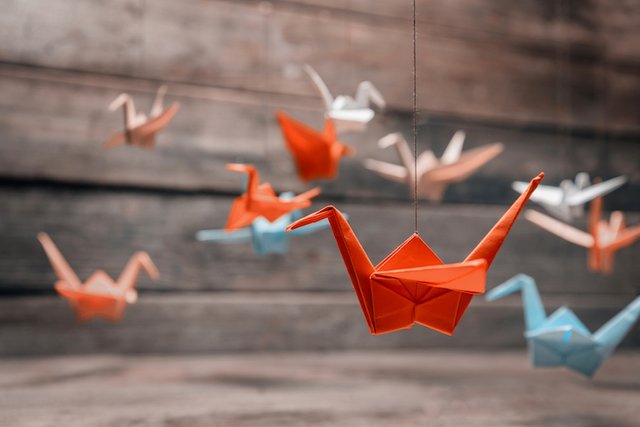
I was about to do my second part to the AI and Slavery post. As often happens I heard something by chance that has changed my plans. I had a talk radio station on in the background and heard an interview with Ken Hom.
Hom is a famous Chinese-American chef and BBC presenter who popularised Asian cooking in the UK in the 1980s and 1990s.
Being of Chinese origin and due to his mother's experiences with Japanese occupation during World War II, he had had a difficult relationship with Japan and so had not really looked into Japanese cuisine. During the interview he recounted how his views changed after a trip to Japan and a visit to Hiroshima.
After visiting the Hiroshima Peace Memorial Museum he realised that war is hell for everyone and no single side has a monopoly on suffering.
My own trip to Hiroshima
The interview rekindled some strong memories within me.
It is almost a decade since I visited Japan with one of my best friends from school.
Whilst there we visited Hiroshima and it was one of the most powerful and moving experiences of my life.
I felt it was something I just had to write something about particularly as I have never written anything about it before.
I have incoroporated some of my photos from my time there. Unfortunately these were taken with an old compact camera, way before I ever did any "real" photography so I must apologise for the quality. Also due to the number of photos I've used much smaller versions in many places than I normally use to make the post load more quickly. If people want to see larger versions of them I could do a separate post with them in.
What surprised me about Hiroshima - it's beautiful
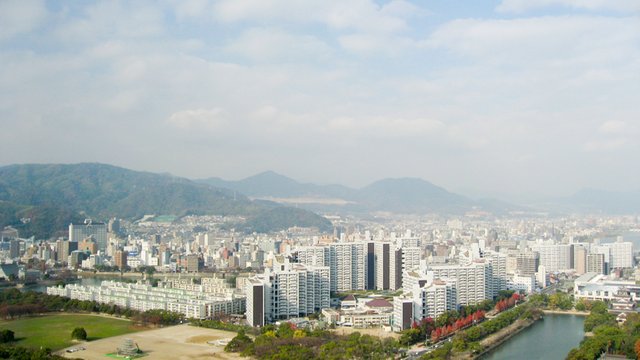
I don't know exactly what I was expected when I visited. Perhaps I still expected it to be in a state of destruction like a scene from a post-apocalyptic movie.
What I found was a beautiful and vibrant city full of parks, greenery and wildlife. The nearby Miyajima Island was like a mini paradise on Earth and I would strongly recommend anyone who visits to take a little detour there. Anyway this pleasant experience created a striking contrast with my visit to the Hiroshima Peace Memorial Museum.
These are all views of Hiroshima taken from my hotel room window. I forget the name of the hotel now. The skyline was surprisingly beautiful with the surrounding mountains in the background.
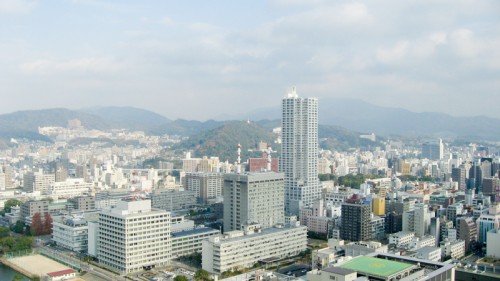
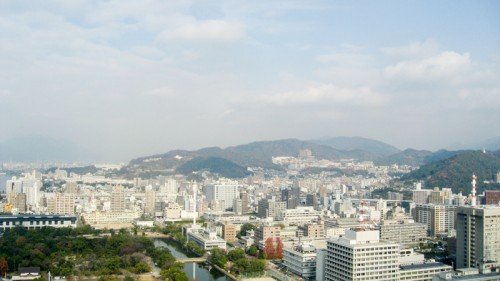
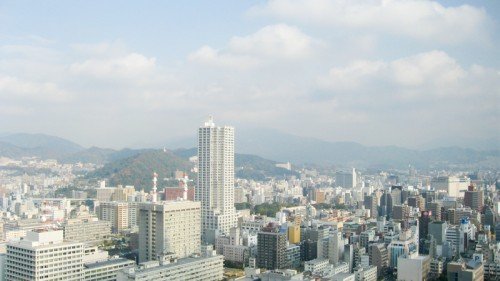
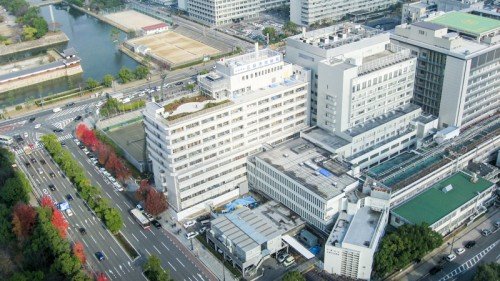
The Hiroshima Peace Memorial Museum
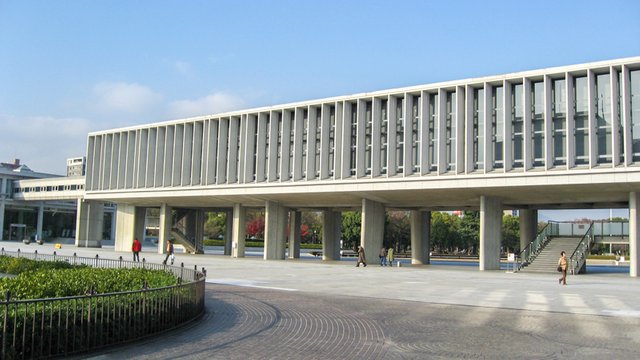
The museum (image above and various views below) is a very modern looking and somewhat anonymous looking piece of architecture on the inside. This gives little impression of what one finds inside.
This is not an easy thing to experience at least not for people like me.
It is a grim catalogue of the events of the Hiroshima Bombing from 1945.
It is almost impossible to cover the totality of that experience in a written post. You really have to go there yourself to know it.
There is also far too much information to cover in a blog post like this. I will try my best to convey the experience.
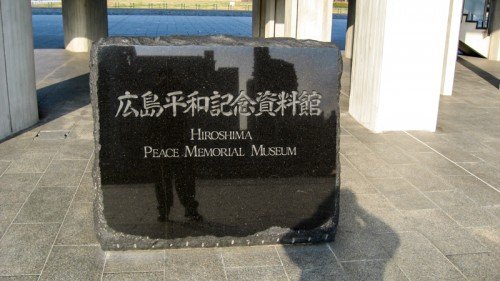

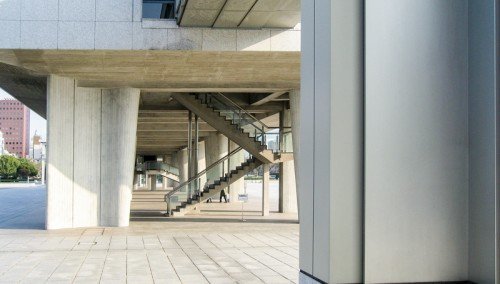
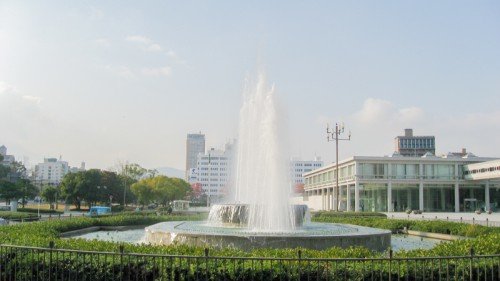
Some external views of the Peace Memorial Museum.
What was inside - the Horrors of the Atom Bomb
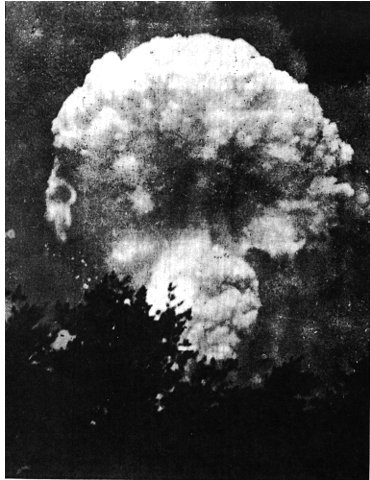
Amongst the mass of horrors that I saw and read about some of the things that stood out most are some of the visual images and items that they had. I think this is because we are very much visual beings and pictures as well as physical objects can really help to bring a story to life. I have deliberately held back on showing some of the more graphic images.
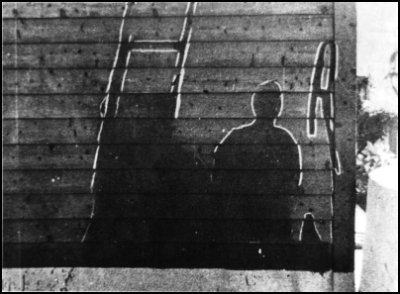
One of the most memorable images (above) is that of someone who basically completely vapourised leaving just a burn mark on some concrete stairs outside a bank. A stain on a piece of masonry was all that was left. Ironically he/she was probably one of the luck ones for suffering an instantaneous death.
Even more distressing were the images of those who died a slow agonising death from the effects of radiation sickness. Imagine your entire body simply falling apart over the course of a few weeks. That is what happened to these people.
High levels of radiation rip apart your DNA and hence destroy your cellular machinery for making new proteins. These are the building blocks that we are all composed of and without them the daily wear and tear of life quickly builds up. Our cells and hence our bodies literally start to fall apart and disintegrate from the inside. Just look up radiation sickness. It truly is one of the worst ways to die.
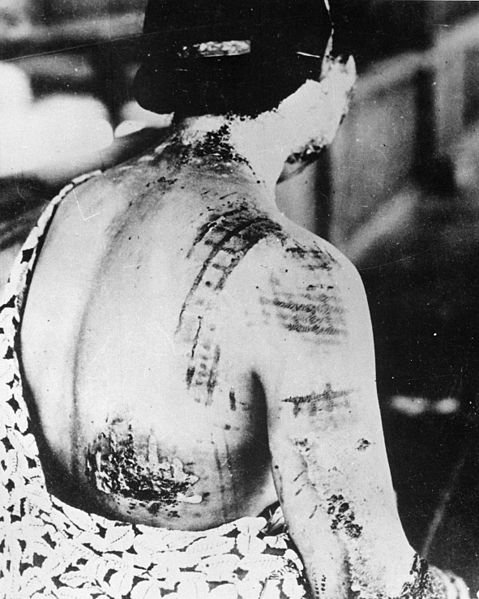
Those who escaped radiation sickness still often had burns that caused severe disfigurment, pain and disability for the rest of their lives.
They also had the very high risk of developing a variety of cancers.
A thousand paper cranes
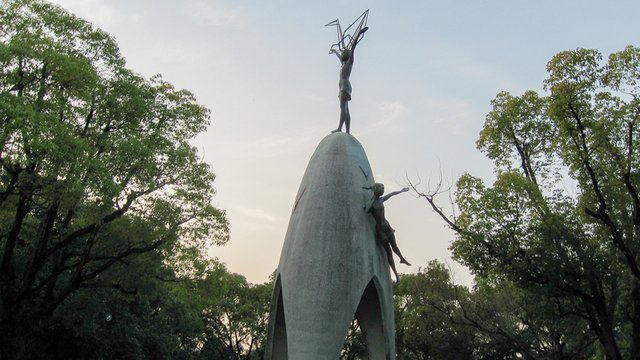
One case that stood out was that of a 12 year old girl (Sadako Sasaki) suffering from leukaemia who had set out to make a 1000 paper cranes which according to legend would grant her wish of survival. She did actually succeed in making them (despite some stories which state she failed) but it did not save her.
They have the cranes in the museum as a memory of her. The children's peace monument (detail view shown above) is dedicated to Sadako. I have also enclosed some more distant views in the section on the Memorial Park.
The horror of war does not discriminate.
No matter what you do to avoid it, the innocent people end up suffering the most.
What I learned - the good guys don't always do good they just do what they are told
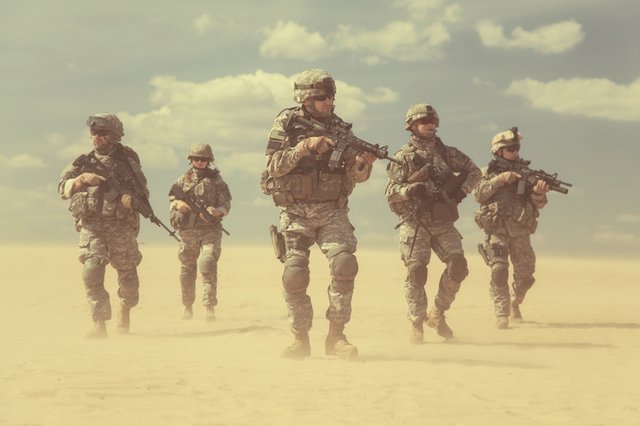
I always grew up with the narrative that we were the good guys and that everything that we did was justified and ethical.
That day made me realise that war itself is evil.
Our leaders and governments also work hard to hide the true consequences of war and to dehumanise the enemy as a means to make us more comfortable with the actions they carry out in our name. Furthermore history books have a tendency to airbrush out uncomfortable truths as my own educational experience has shown me.
I am not saying that World War II was unjustified or that it was wrong to go to war - I think most of us would agree that the axis powers had to be stopped.
Rather I am arguing that war is never as simple or as clear cut as our leaders and masters try to convince us.
Despite their attempts at dehumanisation, the enemy on the other side of your gun, bomb, missile or other weapon is still a human being with thoughts, dreams, hopes and everything else that we all have.
To someone who has been killed or maimed it is no comfort that the "good guys" did it. Their life is still ruined or lost. We must never lose sight of this.
What also stood out to me was that several of the key scientists in the Manhattan project had written to both President Truman and the top military brass to ask that they first demonstrate the atomic bomb on an unpopulated area and give Japan a chance to surrender without further bloodshed.
Multiple requests of this sort were ignored.
We can't be sure that a demonstration of this sort would have ended the war as abruptly as the actual bombings but I think it is certainly something which should have been tried in my personal opinion.
It is always best to try to avoid harm when we can.
A deathly silence
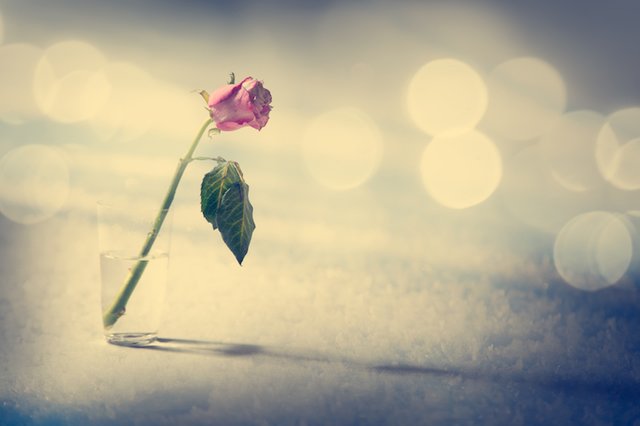
When my friend and I came out of the museum we just stood in silence for about 5 minutes trying to take it all in. I noticed that the museum had the same effect on evereyone who came out.
We all congregated around the exit with a look of a shock in each other's eyes unable to speak.
I think we should have museums like this everywhere cataloguing all the horrors of war to ensure that we NEVER take it lightly or go into un-necessary wars.
I came to the realisation that one of the great crimes of our modern society is that we are actively shielded from the horrors of warfare. This gives of a false impression of what it truly entails.
Being confronted with it's true horror is a sobering experience.
Even more importantly most people have no understanding of the particular brand of devestation that occurs as a result of nuclear weapons. In many ways those who die instantly are the lucky ones.
Given how prolific atomic weapons still are in the modern world it is something we should all be educated about lest we don't take them seriously enough.
The Peace Memorial Park and Monuments
Thankfully there is some respite after visiting the Museum in the beautifully made Peace Memorial Park and Monuments. These allow people to digest what they have experienced in the museum as part of a relaxing and de-stressing walk. I have included some of my photos of the park and monuments below.
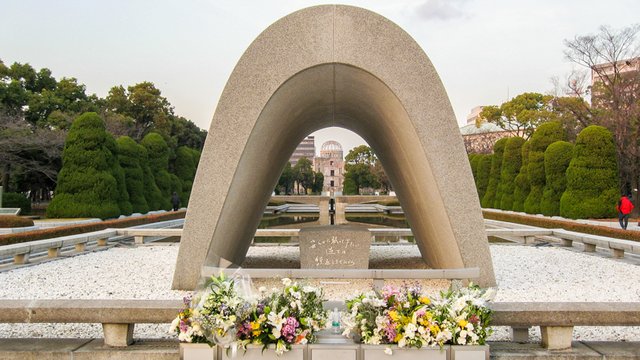
Image: This is the main memorial monument
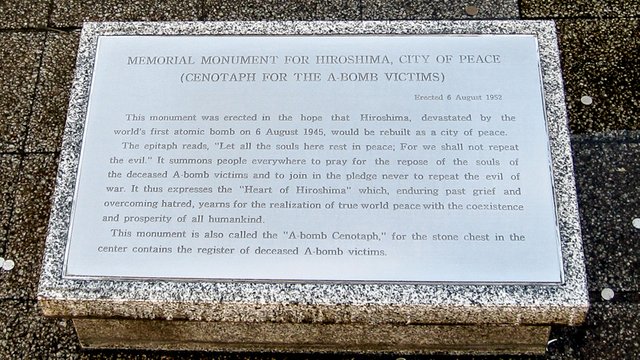
Some information about the main monument (above) and more shots of the children's monument below:
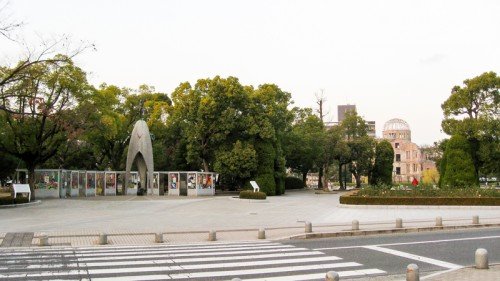
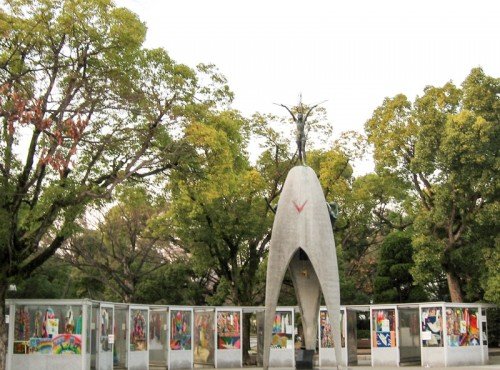
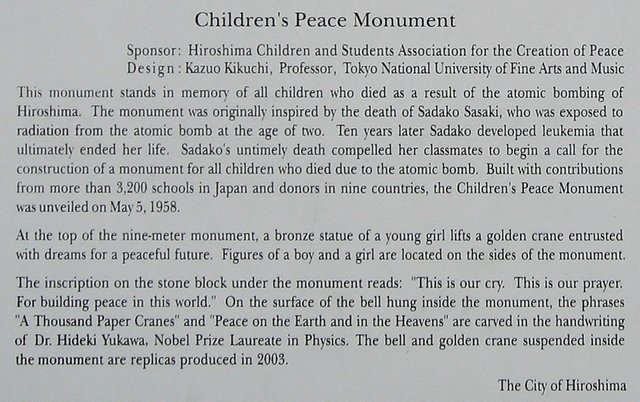
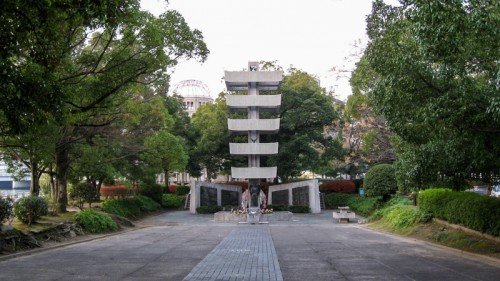
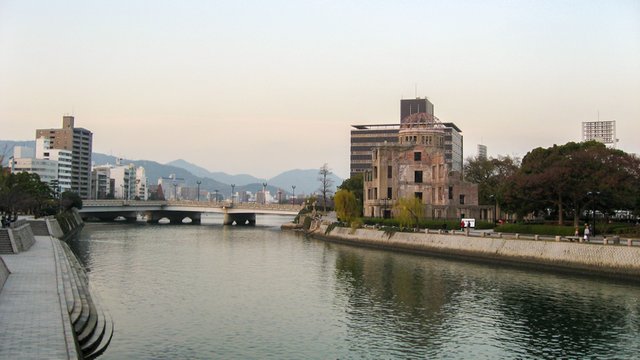
This is a view of the river that passes through Hiroshima and intersects the Memorial Park. The domed building is the famous Prefecture building known as the A-bomb Dome.
Conclusion
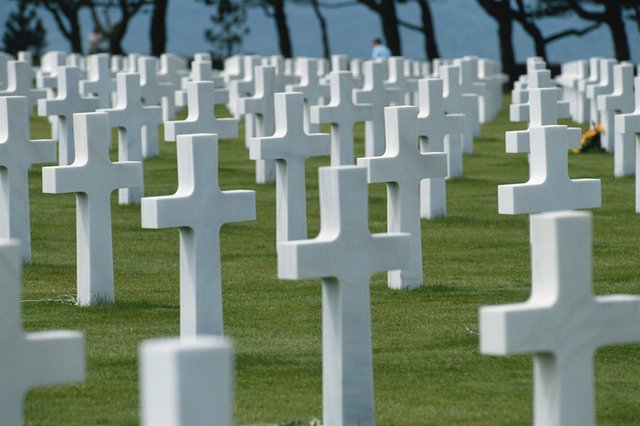
Even when we must go to war every action must be considered for it's ethical consequences.
It is all too easy to dehumanise the other side and ultimately it is the civilians who suffer on both sides as a result of this.
Unfortunately the people in power who make the decisions are cushioned from all of this.
Indeed I think our leaders should be forced to visit sites like this museum on a regular basis so that they never forget the gravity of the decisions they make:
There are really no true winners in war, - only one side which hopes to lose less than the other.
The Obligatory Kitten Photo
Due to the sombre nature of todays post there are 2 photos. One has a puppy too!
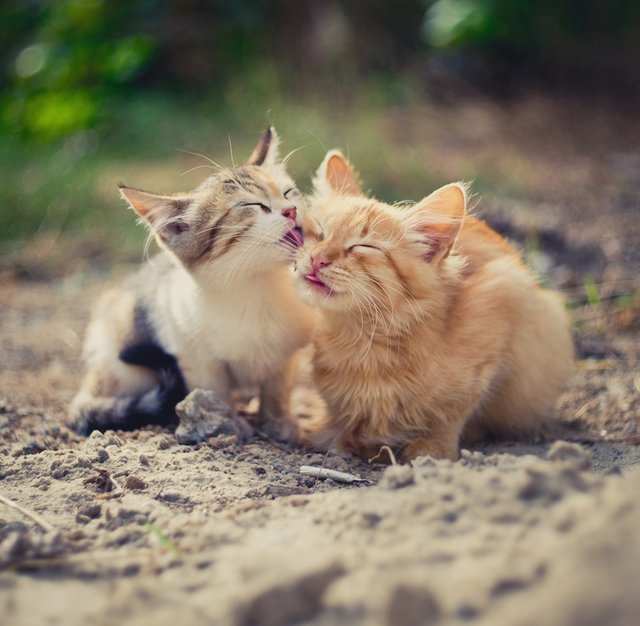
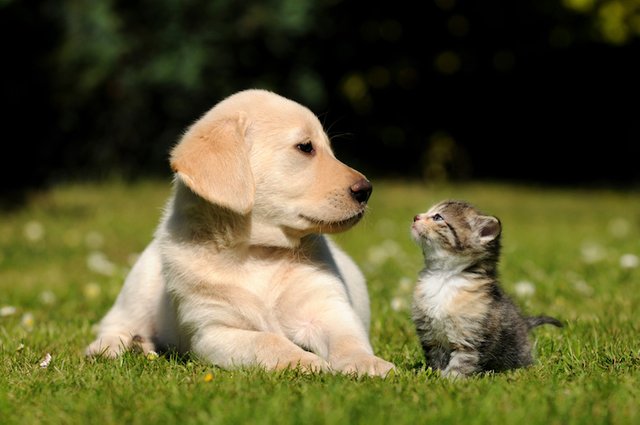
Thank you for reading!
If you like my work and aren't already, please follow me and check out my blog (I mainly discuss photography but I do other topics like this too) - @thecryptofiend
Image Credits: Image of dying rose, military cemetery, soldiers, paper cranes and kitten/puppy photos are all taken from my Thinkstock account. All other images are my own( from my Japan trip) or public domain (historical photos from Wikipedia). Further information can be provided on request.
(Verification for me here: http://www.aapicture.com/about-me)
Some of my Previous Posts and Tutorials:
- Will AI and Robotics Create a New Form of Slavery? (Part 1 - Humans as Masters)
- Make Minnows Into Whales - Use the Main Steemit Account as a Curation Guild to Elect "Super Curators"
- Daisy at the Castle Keep - High Contrast Black and White Photos
- The Updated Steemit Etiquette Guide - New Additions and Your Help Needed
- A little idea for Steemit that could end up being a big idea for progress: The Ideas Factory
- The Missing FAQ - A Beginners Guide To Using Steemit
- Medical Jargon Buster
I just have to say how moving this post was for me, for an unusual reason. My grandfather was a mathematical physicist who worked on creating the atomic bomb at Los Alamos, NM, USA. My mother and I were there with him and I learned to walk there. I've always felt the family connection with the suffering, and your photos helped deepen that tie. Thank you.
You're welcome. Thanks for sharing your connection:)
Wow. This was pretty moving, I'm glad you shared it. Even intellectually I find war repugnant and nonsensical. However, it's the inevitable result of centralized power (i.e. power in the hands of the few). As technology increases, power will be less and less centralized (we're already seeing it happen to some degree) and wars will, therefore, become less and less common, in theory.
Thanks. I hope that decentralisation does help but in some ways I fear that violence and aggression is to ingrained in our nature to get rid of war.
An understandable concern given human history. Still, technology has allowed you to bring empathy across the seas. Further innovations combined with the goodwill of people like yourself might just be enough to keep us from disaster. It has to. The world may not survive another world war, a fact your post makes clear.
Yes but I try to remain optimistic too:) I hope technology can make that change.
Thank you for sharing your experience. Our visit to the Hiroshima Memorial was about 8 years ago. Emotions were very similar to yours. It is a saddening and difficult thing to see the realities of war. We were in Japan just last year and my wife's aunt was suffering from cancer. She had a large growth/tumor just below her left eye which blinded her on that side. She was full of life, chatting and dancing the whole week. She shared her experience as a child living in Nagasaki when the bomb went off. The family survived the impact but were subjected to the ongoing radiation and effects. She believed that the radiation was the cause of her cancer. She told us that years later after the war, the Japanese government was giving compensation for all families that were living in Nagasaki during the bomb. Giving money to make up for any hardships and loss. She said that she would not accept the payout because it would put her on a list of people. She didn't want the stigma of people to know that she was exposed to the bomb. Which could have long term effects to her getting married and employment. She even worried about her children not being accepted for marriage and other social issues. She passed earlier this year. I am glad I was able to meet her and could share this story with you. Thanks for the post and sharing your thoughts on this topic. Rudy
Thanks for sharing your story too. Yes I have heard that before that people who were survivors suffered quite strong stigmatisation because of the ignorance about radiation. People treated it like an infectious disease that they could catch. Sorry to hear about your wife's aunt passing sadly we have fewer and fewer people left who can personally recount the horrors of that time.
There is so much harm and damage inflicted by wars. I can still recall my trip to War Memorial Museum in Saigon, where the horrors of war are in full display.
Yes definitely. I can imagine. War is never pleasant.
This was a very touching thing to read, thank you for sharing it. As an American living in Japan, I consider it my duty to visit Hiroshima at some point to pay my respects. But even after living here for years, I haven't quite managed to work up the courage to do it (yet). I'm not convinced that an act as evil as the atomic bombings was necessary to end the war, and I feel ashamed of my home country when I think about it. But the past can't be changed, all we can do is look forward to the future and take to heart the message of the Peace Memorial Park: that everything in humanity's power be done to ensure that such an unspeakable act never be repeated.
It is difficult for sure. As a Brit I felt very similarly. Even more as someone who comes form a military family - and having a grandfather who served in the Indian army as a Major during World War II that feeling was even greater. I'm glad I went though.
I would urge you to do it because there is no sense of blame or anger there only reconciliation.
It was hard but worth it and I would not take that experience away.
Thank you for posting this, @thecryptofiend. It was recommended by @cryptomancer, and was so good that we decided to feature it in our latest newspaper. Click this link to learn more: https://steemit.com/steemplus/@steemplus/steemplus-thursday-october-6-the-daily-newspaper-that-pays-you-to-find-high-quality-content
Thank you:)
Before the nukes were dropped, other cities were being heavily fire-bombed. Nagasaki was the home of Japanese catholicism.
The locals believed they were being spared because they shared a faith with the Americans. They were actually being "spared" to provide a pristine environment to assess the damage of the nuke.
I didn't know that. Very sad.
Great article. I am glad you got side tracked! Thank you.
Thanks. I'm glad you liked it:)
Very great...
Thank you:)
very informative
Thank you:)